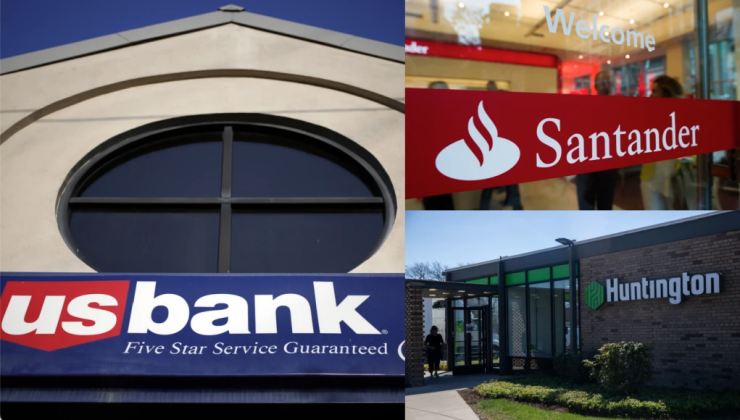Regional banks are turning to a new tool to unlock space on their balance sheets and offload some credit risk to nonbank investors.
The instruments, called credit-linked notes or synthetic risk transfers, are becoming more popular as regulators
With CLNs, banks bundle up chunks of their loans to auto borrowers, corporations or other bank clients and issue "notes" to investors that are linked to the credit performance of those loans. By transferring some of the risk of borrowers defaulting to investors, banks reduce their exposure to default risk and thus can hold a smaller cushion to guard against it.
Banks that have entered into billions of dollars of CLN transactions or gotten approval to do so recently include
"I don't think this is going away. You're going to see more and more of this," said Greg Hertrich of the Japanese bank Nomura, who advises U.S. banks on their balance-sheet strategies.
CLNs are a "very natural evolution" in banks' efforts to ensure they're allocating their capital in the most efficient way possible, Hertrich said. CLNs are similar to the credit-default swaps that banks have long used, though they are safer in that banks get money from investors upfront, eliminating the "counterparty" risk of an investor that doesn't pay up.
Their popularity has gotten the attention of Capitol Hill, where Sen. Jack Reed, a Democrat from Rhode Island, has
Rules for banks are set to get even tougher under a package of proposals that the Federal Reserve and other regulators have rolled out. The industry has
But the growth in CLNs also comes as losses on loans, ranging from
Still, cautioned Warren Kornfeld of the ratings firm Moody's Investors Service, CLNs don't offer the wide-ranging protections afforded by plain-old capital. He argued equity from shareholders can cover any kinds of losses, ranging from losses on loans to operational losses, which can stem from supervisory actions by regulators, cyberattacks or other unforeseen issues.
"The bank would be far stronger by issuing equity. Equity covers all losses," Kornfeld said.
He added: "Is there a right place for these? Probably. But a bank also needs to make sure that it understands under what scenarios doing these transactions benefits it. Where does it cover, and then where does it not cover?"
Sheila Bair, a former Federal Deposit Insurance Corp. chair, has
But Michael Bright, who heads the Structured Finance Association,
Banks wanting to issue CLNs have been turning for permission to the Fed, whose capital rules have long allowed banks to lower their capital requirements if they transfer risk on loans through credit-default swaps. CLNs, the argument goes, essentially replicate key aspects of credit-default swap transactions and thus should be eligible for the same treatment.
The Fed has approved requests in recent months from Morgan Stanley,
The Fed's approvals should lead to more activity in CLNs, bank lawyers and industry advisors said.
"Now that they've gotten more comfortable about it, I think you'll see these begin to become more prominent," said Greg Lyons, the co-chair of the financial institutions group at the law firm Debevoise & Plimpton.
Still, the Fed isn't fully opening the CLN gates, telling those banks that they can't issue CLNs greater than $20 billion, or 100% of their total capital.
Michael Barr, the Fed vice chairman for supervision, said at a Senate hearing last year that the Fed has "very strong visibility into the bank side of the transaction" and is monitoring any risks tied to deals with third parties. But he also noted regulators have "much less visibility into hedge funds and private equity funds," which have bought CLNs given that they offer sizable yields and solid credit performance.
Large and regional banks are taking different approaches to buybacks in light of the proposed new capital rules. Some plan to buy back stock at moderate levels this year, while others say they will to remain on the sidelines until there is more clarity about the reforms.
The types of assets that are the best fit for CLNs have a "low loss history and are high credit quality but carry very punitive risk weightings," said Missy Dolski, global head of capital markets at the investment firm Värde.
Auto loans have been featured in the CLNs issued by
Dolski said other bank loans that have a high credit performance and are good candidates for CLNs include the revolving credit lines that banks issue to investment-grade corporations; capital call lines that lenders offer to the general partners of investment firms; and "warehouse" loans to mortgage companies that then quickly sell the loans to Fannie Mae and Freddie Mac.
"From an investor perspective, you can get paid to get exposure to an asset class that has low losses that you perhaps wouldn't otherwise be able to get exposure to," Dolski said.







